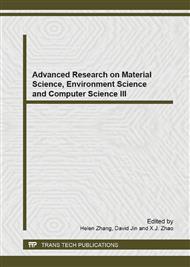p.378
p.382
p.386
p.390
p.394
p.398
p.402
p.408
p.413
The Control Method with Energy Saving of the Inflow Turbulence for Router Cooling Fan
Abstract:
In this paper, the characteristics of the inflow turbulence intensity of a router cooling fan are studied experimentally. Screens with different parameters are designed to control the inflow turbulence intensity. The flow field is measured by hot-wire anemometer. The results show that the inflow turbulence intensity is closely connected with the parameters of the control screens. The inflow turbulence intensity can be significantly reduced when the screen with small meshes is used, while the mean flow is barely affected by the screen.
Info:
Periodical:
Pages:
394-397
Citation:
Online since:
January 2014
Authors:
Price:
Сopyright:
© 2014 Trans Tech Publications Ltd. All Rights Reserved
Share:
Citation:


